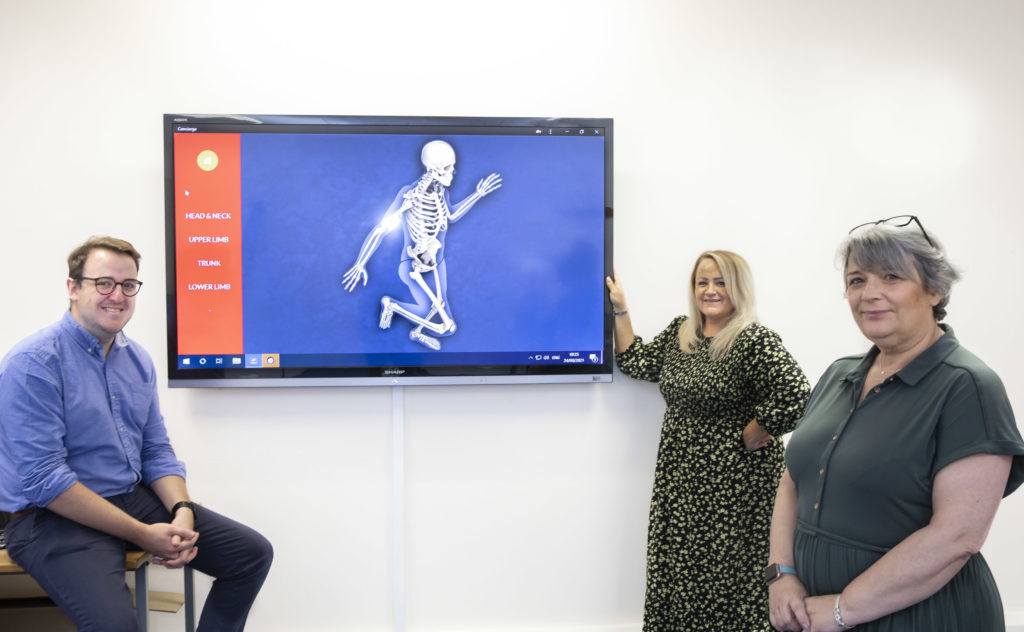
Revolutionary Virtual Reality headsets and video gaming graphics are being used by Bangor University to train the next generation of X-ray radiographers in North Wales.
The University’s Wrexham campus was the first in the UK to order a new computer programme which enables students to use VR to learn how to take X-rays without the risk of exposure to harmful cancer-causing gamma rays.
The £15,000 software system, pioneered in Christchurch in New Zealand, is now up and running at the University’s School of Medical and Health Sciences in Wrexham and the next generation of radiographers can now learn more quickly and easily to help reduce a chronic shortage of skilled X-ray operators in the NHS.
It recreates a new X-ray suite virtually and at a considerable saving – a new facility would cost a quarter of a million pounds to set up.
Delyth Hughes, Bangor University Course Lead for Diagnostic Radiography, said: “Like all radiography courses we are limited by the amount of actual X-rays students can take because of exposure to ionising radiation.
“But this new VR system means those limits no longer apply because we aren’t actually taking an X-ray but we can still see the results.
“One of the most important things students have to learn is how to position so that the X-ray will be taken at the right angle to show any possible issues with the patient.
“Using VR, the student can position a virtual patient and then see if they’ve got it right without any of those issues of expense and exposure.”
While Bangor University is among the first in the UK to use the system to train radiographers they are in good company alongside the likes of Ivy League Harvard University in the USA.
James Hayes, a lecturer in medical imaging at the Ara Institute of Canterbury, is the person behind the idea after asking the Institute’s programming experts to develop the software.
He oversaw their work and said: “I asked them to make it so that it looked like a virtual reality X-ray room rather than a virtual reality game. And they said within reason and I said ‘well let’s not say within reason, let’s say we want to make it identical’.
“It will mean students will have far more clinical experience when they get to the hospitals than they or anyone else in the world has had before.”
Meanwhile Bangor University have increased the size of their first year intake of student radiographers by 25 per cent to 35 to help meet a shortage in the NHS.
Delyth Hughes added: “Usually it’d be too dangerous to X-ray unnecessarily, so the system uses a virtual patient.
“Virtual Reality offers our students an engaging and safe way to learn and practice because everything is identical to the real world in terms of size, distance, and procedures.
“If the radiography tube needs to be adjusted the students can walk up to it, hold it, press the appropriate buttons, and move it.
“VR offers audio, visual, and sensory feedback so the students will be able to see and feel, just as if they were working with a real patient.
“It will mean that our students will have had far more experience of carrying out these procedures and with only 23 UK universities providing radiography courses Bangor is leading the way.”
Bangor University’s School of Medical and Health Sciences provides a range of health and care courses and qualifications from its campuses at Bangor and Wrexham and works closely with the Betsi Cadwaladr University Health Board across North Wales.
Bangor University offers programmes for health professionals across a range of skills and services for the NHS and for private care services.
For more on studying Health Sciences at Bangor University go to https://www.bangor.ac.uk/health-sciences/ and for information on the university go to https://www.bangor.ac.uk/